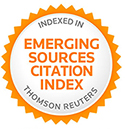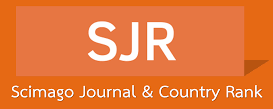Análisis multitemporal del cambio de uso del suelo y deforestación en la Reserva Ecológica Los Ilinizas, Ecuador andino
Resumen
En la Reserva Ecológica Los Ilinizas, debido a las afectaciones antrópicas y la deforestación, el área boscosa ha ido disminuyendo drásticamente por falta de educación y control medio-ambiental. Por ello la presente investigación buscó estimar la tasa de deforestación de la Reserva Ecológica Los Ilinizas y describir el cambio del uso del suelo en un periodo de 10 años (2013-2023), utilizando imágenes satelitales LANDSAT 8 tomadas en diferentes fechas, y analizadas mediante teledetección y SIG, obteniendo la tasa de deforestación y el cambio de uso de suelo en esos 10 años. Las imágenes del año 2013 y del 2023, se obtuvieron del repositorio digital del servicio Geológico de Estados Unidos de América (USGS). Con el software Catalyst se realizó el proceso de la clasificación supervisada para el año 2013 y 2023, mediante el análisis de objetos incluyendo 5 categorías: Bosque, Suelo Agrícola, Nubes, Sombra de Nube y Suelo Desnudo. El tratamiento de la información se realizó con ArcGIS y QGIS, dando como resultado una tasa de deforestación de -2,60% durante el periodo en estudio, evidenciando la disminución de la cobertura vegetal boscosa en la reserva, debido en gran parte a la expansión de la frontera agrícola, la deficiente educación de la ciudadanía y la poca falta de control medio ambiental por parte de las autoridades.
Recibido: septiembre, 2024/ Aceptado: enero, 2025
Palabras clave
Texto completo:
PDF (English)Referencias
ABBAS, S.; WONG, M. S.; WU, J., SHAHZAD, N. & S. MUHAMMAD IRTEZA. 2020. “Approaches of satellite remote sensing for the assessment of above-ground biomass across tropical forests: Pan-tropical to national scales”. Remote Sensing, 12(20): 3.351. ACHISO, Z. 2020. “Biodiversity and human livelihoods in protected areas: worldwide perspective—a review”. SSR Institute of International Journal of Life Sciences, 6(3):2565-2578.
ARCESE, P. & A. R. SINCLAIR. 1997b. “The role of protected areas as ecological baselines”. The Journal of Wildlife Management, 61: 587-602.
ASNER, G. & J. MASCARO. 2014. “Mapping tropical forest carbon: Calibrating plot estimates to a simple LiDAR metric”. Remote Sensing of Environment, 140: 614-624. Avalaible in: https://doi.org/10.1016/j.rse.2013.09.023.
BAKER, W. L. 1992. “The landscape ecology of large disturbances in the design and management of nature reserves”. Landscape ecology, 7:181-194. BASTMEIJER, K. & S. VAN HENGEL. 2009. “The role of the protected area concept in protecting the world’s largest natural reserve: Antarctica”. Utrecht Law Review, 5(1): 61-79.
BATISSE, M. 1997. “Biosphere reserves: a challenge for biodiversity conservation & regional development”. Environment: Science and Policy for Sustainable Development, 39(5): 6-33. BATISSE, M. 1982. “The biosphere reserve: a tool for environmental conservation and management”. Environmental conservation, 9(2): 101-111.
BENGTSSON, J.; ANGELSTAM, P.; ELMQVIST, T.; EMANUELSSON, U. ; FOLKE, C.; IHSE, M.; .... & M. NYSTRÖM. 2003. “Reserves, resilience and dynamic landscapes”. AMBIO: A Journal of the Human Environment, 32(6): 389-396.
BIELECKA, E. 2020. “GIS spatial analysis modeling for land use change. A bibliometric analysis of the intellectual base and trends”. Geosciences, 10(11): 421.
BRÜCK, S. A.; AMÁN, K. T.; BUITRÓN, P. B.; PAREDES, W. P.; QUITUIZACA, P. R. & M. D. L. T. DE MORAES. 2023. “Potential impacts of seasonal and altitudinal changes on enzymatic peat decomposition in the High Andean Paramo region of Ecuador”. Science of The Total Environment, 890: 164-365.
BURBANO, D. V.; MEREDITH, T. C. & M. E. MULRENNAN. 2020. “Exclusionary decision-making processes in marine governance: The rezoning plan for the protected areas of the ‘iconic’Galapagos Islands, Ecuador”. Ocean & coastal management, 185: 105066.
CAMACHO-LÓPEZ, C.; JARA-FRANCO, N. & J. GONZÁLEZ-RIVADENEIRA. 2022. “Análisis multitemporal de la deforestación y cambio de la cobertura del suelo en Morona Santiago”. Polo del Conocimiento, 7(1): 797-807. Avalaible in: 10.23857/pc.v7i1.3511. CAO, C. & N. S. N. LAM. 2023. “Understanding the scale and resolution effects in remote sensing and GIS. In: Scale in remote sensing and GIS, pp. 57-72. Routledge. New York, USA.
CHUNGA, K.; OCHOA-CORNEJO, F.; MULAS, M.; TOULKERIDIS, T. & E. MENÉNDEZ. 2018. “Characterization of seismogenic crustal faults in the Gulf of Guayaquil, Ecuador”. Andean Geology, 46(1): 66-81.
CHUQUIBALA, E. M. 2022. “Análisis multitemporal de índices de deforestación en el distrito de Yambrasbamba, Amazonas”. Perú. Revista Científica UNTRM, Ciencias Naturales E Ingeniería, 5(1): 20–28. https://doi.org/10.25127/ucni.v4i3.803
CHUVIECO, E. 2008. Fundamentos de teledetección espacial. (2da ed.). Ediciones Rialp, S.A. Madrid, España.
CONWAY, C. E.; PURE, L. R. & O. ISHIZUKA. 2023. “An assessment of potential causal links between deglaciation and eruption rates at arc volcanoes”. Frontiers in Earth Science, 11: 1082342.
COOK-PATTON, S. C.; LEAVITT, S. M.; GIBBS, D.; HARRIS, N. L.; LISTER, K.; ANDERSON-TEIXEIRA, K. J.; …. & B. W. GRISCOM. 2020. “Mapping carbon accumulation potential from global natural forest regrowth”. Nature, 585(7826): 545-550.
DeFRIES, R.; HANSEN, A.; TURNER, B. L.; REID, R. & J. LIU. 2007. “Land use change around protected areas: management to balance human needs and ecological function”. Ecological applications, 17(4): 1031-1038.
DUEÑAS, A.; JIMÉNEZ-UZCÁTEGUI, G. & T. BOSKER. 2021. “The effects of climate change on wildlife biodiversity of the Galapagos Islands”. Climate Change Ecology, 2: 100026.
DUPUIS, C.; LEJEUNE, P.; MICHEZ, A. & A. FAYOLLE. 2020. “How can remote sensing help monitor tropical moist forest degradation?—a systematic review”. Remote Sensing, 12(7): 1.087.
ECHEVERRÍA-PUERTAS, J.; ECHEVERRÍA, M.; CARGUA, F. & T. TOULKERIDIS. 2023. “Spatial dynamics of the shore coverage within the zone of influence of the Chambo river, Central Ecuador”. Land, 12(1): 180.
FERRAZ, A.; SAATCHI, S.; MALLET, C.; MEYER, V. 2016. “Lidar detection of individual tree size in tropical forests”. Remote Sensing of Environment. 183: 318-333. Avalaible in: https://doi.org/10.1016/j.rse.2016.05.028.
GANZ, S.; ADLER, P. & G. KÄNDLER. 2020. “Forest cover mapping based on a combination of aerial images and Sentinel-2 satellite data compared to National Forest Inventory data”. Forests, 11(12): 1.322.
GAO, Y.; SKUTSCH, M.; PANEQUE-GÁLVEZ, J. & A. GHILARDI. 2020. “Remote sensing of forest degradation: a review”. Environmental Research Letters, 15(10): 103001.
GARCÍA-COX, W.; LÓPEZ-TOBAR, R.; HERRERA-FEIJOO, R. J.; TAPIA, A.; HEREDIA-R, M.; TOULKERIDIS, T.& B. TORRES. 2023. “Floristic Composition, Structure, and Aboveground Biomass of theMoraceae Family in an Evergreen Andean Amazon Forest, Ecuador”. Forests, 14(7):1.406.
GENELETTI, D. & I. VAN DUREN. 2008. “Protected area zoning for conservation and use: A combination of spatial multicriteria and multiobjective evaluation”. Landscape and urban planning, 85(2): 97-110.
GONZALES, A. 2018. Análisis multitemporal de la deforestación y perdida de cobertura boscosa en la provincia de Manu. Lima, Perú. Universidad Nacional Federico Villarreal. Tesis de Ingeniero Geógrafo.
GUASCAL, E.; ROJAS, S.; KIRBY, E.; TOULKERIDIS, T.; FUERTES, W. & M. HEREDIA. 2020. Application of remote sensing techniques in the estimation of forest biomass of a recreation area by UAV and RADAR images in Ecuador. In: 2020 Seventh International Conference on eDemocracy & eGovernment (ICEDEG) (pp. 183-190). IEEE.
HALPERN, B. S. 2003. “The impact of marine reserves: do reserves work and does reserve size matter?”. Ecological applications, 13(sp1):117-137.
HANSEN, A. J. & DEFRIES, R. 2007. “Ecological mechanisms linking protected areas to surrounding lands”. Ecological applications, 17(4): 974-988.
HEMATI, M.; HASANLOU, M.; MAHDIANPARI, M. & F. MOHAMMADIMANESH. 2021. “A systematic review of landsat data for change detection applications: 50 years of monitoring the earth”. Remote sensing, 13(15): 2.869.
HEREDIA-R, M.; TORRES, B.; CABRERA-TORRES, F.; VASCO, E.; DÍAZ-AMBRONA, C. G. & T. TOULKERIDIS. 2022. Free Data Processing Applied to Detect Changes in Land Use Coverage at Biodiversity Hotspots of the Amazon. In Doctoral Symposium on Information and Communication Technologies-DSICT (pp. 104-115). Cham: Springer International Publishing.
HERRERA-FEIJOO, R. J.; TORRES, B.; LÓPEZ-TOBAR, R.; TIPÁN-TORRES, C.; TOULKERIDIS, T.; HEREDIA-R, M. & R. G. MATEO. 2023. “Modelling climatically suitable areas for Mahogany (Swietenia macrophylla King) and their shifts across Neotropics: The role of Protected Areas”. Forests, 14(2): 385.
INSTITUTO NACIONAL DE INVESTIGACIONES AGROPECUARIAS (INIAP) 2019. Evaluación de Impacto Ambiental de la Deforestación en la Región Andina Ecuatoriana. Quito, Ecuador.
JADÁN, O.; DONOSO, D. A.; CEDILLO, H.; BERMÚDEZ, F. & O. CABRERA. 2021. “Floristic groups, and changes in diversity and structure of trees, in tropical montane forests in the Southern Andes of Ecuador”. Diversity, 13(9)- 400.
JAILLARD, E.; HÉRAIL, G.; MONFRET, T.; DÍAZ-MARTÍNEZ, E.; BABY, P.; LAVENU, A.; .... & D. CAMPOS. 2000. “Tectonic evolution of the Andes of Ecuador, Peru, Bolivia and northern Chile”. In: U. G. CORDANI; E. J. MILANI; A. THOMAZ FILHO AND D. A. CAMPOS (Eds.), Tectonic evolution of South America, pp. 481-559. Rio de Janeiro, Brazil.
KLEEMANN, J.; ZAMORA, C.; VILLACIS-CHILUISA, A. B.; CUENCA, P.; KOO, H.; NOH, J. K.; …. & M. THIEL. 2022a. “Deforestation in continental Ecuador with a focus on protected areas”. Land, 11(2): 268.
KLEEMANN, J.; KOO, H.; HENSEN, I.; MENDIETA-LEIVA, G.; KAHNT, B.; KURZE, C.; .... & C. FÜRST. 2022b. “Priorities of action and research for the protection of biodiversity and ecosystem services in continental Ecuador”. Biological Conservation, 265: 109404.
LILLESAND, T.; KIEFER, R. & J. CHIPMAN. 2015. Remote Sensing and Image Interpretation. John Wiley & Sons. London, United Kingdom. LOCKE, H. & P. DEARDEN. 2005. “Rethinking protected area categories and the new paradigm”. Environmental conservation, 32(1): 1-10.
LÓPEZ, S.; LÓPEZ-SANDOVAL, M. F.; GERIQUE, A. & J. SALAZAR. 2020. “Landscape change in Southern Ecuador: An indicator-based and multi-temporal evaluation of land use and land cover in a mixed-use protected area”. Ecological Indicators, 115: 106357.
LOZANO, P.; CABRERA, O.; PEYRE, G.; CLEEF, A. & T. TOULKERIDIS. 2020. “Plant diversity and composition changes along an altitudinal gradient in the isolated volcano Sumaco in the ecuadorian amazon”. Diversity, 12(6): 229.
MAE 2020. Informe de Monitoreo de Bosques y Cambio de Uso del Suelo en el Ecuador Continental 2000-2018. Ministerio del Ambiente del Ecuador. Quito, Ecuador.
MAS, J. F.; PUIG, H.; PALACIO, J. L. & A. SOSA-LÓPEZ. 2004. “Modelling deforestation using GIS and artificial neural networks”. Environmental Modelling & Software, 19(5): 461-471.
MASSONNE, H. J. & T. TOULKERIDIS. 2012. “Widespread relics of high-pressure metamorphism confirm major terrane accretion in Ecuador: a new example from the Northern Andes”. International Geology Review, 54(1): 67-80.
MENDOZA, M. & ROMÁN. 2021. Análisis multitemporal de la deforestación en la reserva ecológica Mache–Chandul. Escuela Superior Politécnica del Litoral. Guayaquil, Ecuador.
MO, L.; ZOHNER, C. M.; REICH, P. B.; LIANG, J.; DE MIGUEL, S.; NABUURS, G. J.; .... & E. ORTIZ-MALAVASI. 2023. “Integrated global assessment of the natural forest carbon potential”. Nature, 624(7990): 92-101.
MOSQUERA LOPEZ, D.; CUEVA JIMENEZ, Z.; CHALCO BARAHONA, I.; MORENO IZQUIERDO, J.; SUANGO, V.; GARCÍA-VILLACRES, A. & T. TOULKERIDIS. 2021. Geo-technologies applied to the spatial analysis of territorial inequalities-Case study of Latacunga, Central Ecuador. XV Multidisciplinary International Congress on Science and Technology (pp. 199-213). Cham: Springer International Publishing.
MUÑOZ, J.; CABRERA, B. & T. TOULKERIDIS. 2023. “Analysis of land use change using remote sensing and GIS techniques in the Cazaderos forest, Loja province, Southern Ecuador”. Revista Geográfica De Chile Terra Australis, 59. Avalaible in: https://doi.org/10.23854/07199562.2023592.munoz.
NEGRU, C.; GAIBOR, I. D.; HALALI?AN, A. F. & B.POPA. 2020. “Management effectiveness assessment for Ecuador’s National Parks”. Diversity, 12(12): 487.
PERES, C. A. & J. W. TERBORGH. 1995. “Amazonian nature reserves: an analysis of the defensibility status of existing conservation units and design criteria for the future”. Conservation biology, 9(1): 34-46.
PITMAN, N. C.; MOGOLLÓN, H.; DÁVILA, N.; RÍOS, M.; GARCÍA-VILLACORTA, R.; GUEVARA, J.; …. & E. VALDERRAMA. 2008. “Tree community change across 700 km of lowland Amazonian forest from the Andean foothills to Brazil”. Biotropica, 40(5): 525-535.
REIERSEN, G.; DAO, D.; LÜTJENS, B.; KLEMMER, K.; AMARA, K.; STEINEGGER, A.; …. & ZHU, X. 2022. Refores Tree: A dataset for estimating tropical forest carbon stock with deep learning and aerial imagery. Proceedings of the AAAI Conference on Artificial Intelligence, 36(11): 12.119-12.125).
SANDWITH, T.; SHINE, C.; HAMILTON, L. & D. SHEPPARD. 2001. “Protected areas for peace and co-operation”. Best practice protected area guidelines series, (7).
SANTAMARIA, S.; QUIDELLEUR, X.; HIDALGO, S.; SAMANIEGO, P.; LE PENNEC, J. L.; LIORZOU, C.; ... & P.ESPÍN. 2022. “Geochronological evolution of the potentially active Iliniza Volcano(Ecuador) based on new K-Ar ages”. Journal of Volcanology and Geothermal Research, 424:107489.
SHAFER, C. L. 1999. “National park and reserve planning to protect biological diversity: some basic elements”. Landscape and Urban Planning, 44(2-3): 123-153.
SHAFIQUE, A.; CAO, G.; KHAN, Z.; ASAD, M. & M. ASLAM. 2022. “Deep learning-based change detection in remote sensing images: A review”. Remote Sensing, 14(4): 871.
SILLO, A.; TOULKERIDIS, T.; ROMO, D. & N. ZABALA. 2010. “En el corazón de los Ilinizas – Plantas medicinales: usadas en la UNOCANC y sus poderes curativos”. CGVG-USFQ, Editorial of the USFQ, Quito, Ecuador.
SIMELANE, S. P.; HANSEN, C. & C. MUNGHEMEZULU. 2021. “The use of remote sensing and GIS for land use and land cover mapping in Eswatini: a review”. South African Journal of Geomatics, 10(2): 181-206.
SUN, T.; CHENG, W.; ABDELKAREEM, M. & N. AL-ARIFI. 2022. “Mapping prospective areas of water resources and monitoring land use/land cover changes in an arid region using remote sensing and GIS techniques. Water, 14(15): 2435.
TALLIS, H. & S. POLASKY. 2009. “Mapping and valuing ecosystem services as an approach for conservation and natural-resource management”. Annals of the New York Academy of Sciences, 1.162(1): 265-283.
TOULKERIDIS, T. & I. ZACH. 2017. “Wind directions of volcanic ash-charged clouds in Ecuador–implications for the public and flight safety”. Geomatics, Natural Hazards and Risk, 8(2): 242-256.
TOULKERIDIS, T.; ECHEGARAY-AVEIGA, R. C. & K. P. MARTÍNEZ-MALDONADO. 2021. “Shock metamorphism in volcanic rock due to the impact of the Miguir-Cajas meteorite in 1995 and its importance for Ecuador”. Geo Journal of Tourism and Geosites, 35(2): 315-321.
TOULKERIDIS, T.; TAMAYO, E.; SIMÓN-BAILE, D.; MERIZALDE-MORA, M. J.; REYES–YUNGA, D. F.; VIERA-TORRES, M. & M. HEREDIA. 2020. “Climate Change according to Ecuadorian academics–Perceptions versus facts”. LA GRANJA. Revista de Ciencias de la Vida, 31(1): 21-46.
TURNER, W.; SPECTOR, S.; GARDINER, N.; FLADELAND, M.; STERLING, E. & M. STEININGER. 2003. “Free and open access to Landsat imagery”. Remote Sensing of Environment, 82(2/3): 267-273.Avalaible in: http://dx.doi.org/10.1126/science.320.5879.1011a.
VALDEZ, D. D.; ENRÍQUEZ, W. O. J.; NAVARRO, T. G. & T. TOULKERIDIS. 2024. “Ecotourism carrying capacity of the Cotopaxi National Park, Central Ecuador”. Revista Geográfica Venezolana, 65(1): 100-121.
VILAR, C. C.; MAGRIS, R. A.; LOYOLA, R. & J. C. JOYEUX. 2020. “Strengthening the synergies among global biodiversity targets to reconcile conservation and socio-economic demands”. Aquatic Conservation: Marine and Freshwater Ecosystems, 30(3): 497-513.
WHIG, P.; BHATIA, A. B.; NADIKATU, R. R.; ALKALI, Y. & P. SHARMA. 2024. “GIS and Remote Sensing Application for Vegetation Mapping”. In: Geo-Environmental Hazards using AI-enabled Geospatial Techniques and Earth Observation Systems, pp. 17-39. Cham: Springer Nature Switzerland.
YASIR, M.; HUI, S.; BINGHU, H. & S. U. RAHMAN. 2020. “Coastline extraction and land use change analysis using remote sensing (RS) and geographic information system (GIS) technology–A review of the literature”. Reviews on Environmental Health, 35(4): 453-460.
ZHANG, J.; YIN, N.; WANG, S.; YU, J.; ZHAO, W. & B. FU. 2020. “A multiple importance–satisfaction analysis framework for the sustainable management of protected areas: Integrating ecosystem services and basic needs”. Ecosystem Services, 46: 101219.
ZHU, Z.; QIU, S. & S. YE. 2022. “Remote sensing of land change: A multifaceted perspective”. Remote Sensing of Environment, 282: 113266.
Enlaces refback
- No hay ningún enlace refback.
DOI: https://doi.org/10.53766/RGV
La Revista Geográfica Venezolana se encuentra actualmente indizada en:
 |  |  | |
 |  |  |  |
 |  |  |  |
![]()
Todos los documentos publicados en esta revista se distribuyen bajo una
Licencia Creative Commons Atribución -No Comercial- Compartir Igual 4.0 Internacional.
Por lo que el envío, procesamiento y publicación de artículos en la revista es totalmente gratuito.

